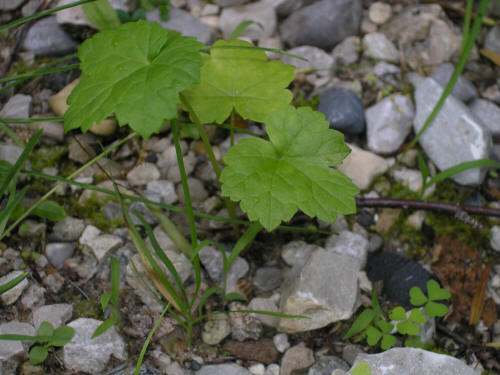
Giant Hogweed
Heracleum mantegazzianum Sommier & Levier
Apiaceae (Carrot Family)

▲▼ seedlings, young plants
▲▼ seedlings, young plants
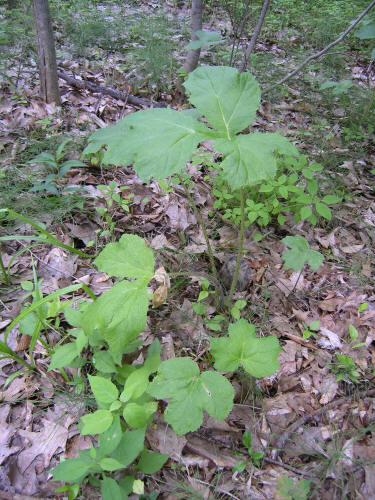
▲▼slightly older plants
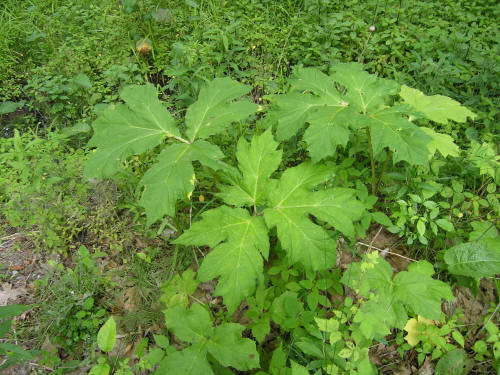
▲▼ mature plants, ready to flower

▲▼purplish speckling in ridges and hairy stems
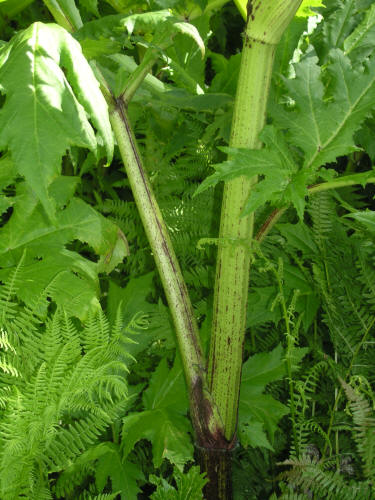
▲▼purplish speckling in ridges and hairy stems

▲ large mature leaf (note U.S. dime just below and right of center picture sitting on leaf)
▲ hollow flowering stem (above photo by Mike Sallee)
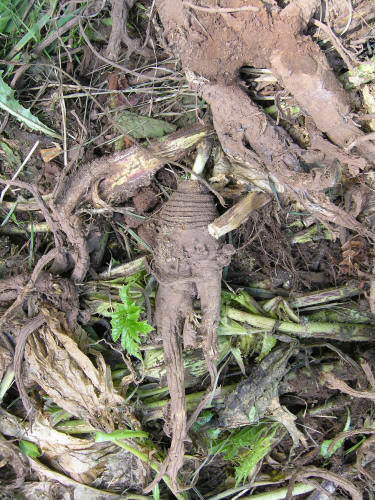
▲ uprooted crowns (still trying to grow)
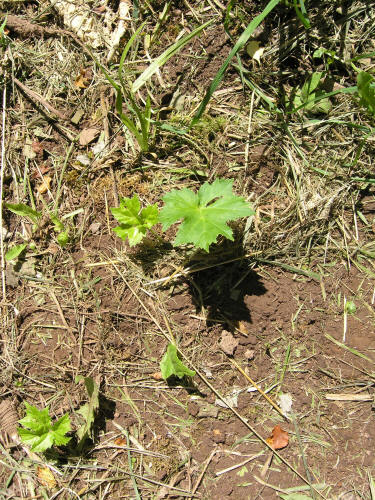
▲ regrowth from where the crowns had been dug
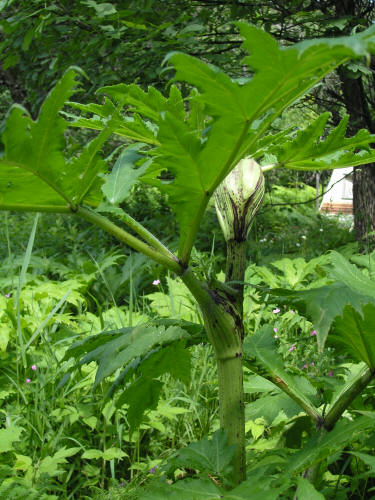
▲ plant initiating flowering
▲▼ mature, flowering plants (above and below photos by Mike Salli)
▲▼ mature, flowering plants (above and below photos by Mike Salli)
▲▼ mature, flowering plants (above and below photos by Mike Salli)
▲ inflorescence starting to form seeds (above photo by Mike Salli)
▲▼ seed forming on inflorescence (above and below photos by Mike Salli)
Heracleum mantegazzianum
Sommier & Levier.; Giant Hogweed:
(Bayer Code:
HERMZ; US Code HEMA17)
·
Herbaceous
short-lived perennial in the Carrot Family (Apiacaeae) that lives 2-5 or more
years,
producing a rosette of very large, tripartite leaves with toothed
margins; leaves are hairy and can be up to 3 feet or more in diameter
·
Leaf stems and flowering stems have purple speckling (usually in rows)
and moderate to dense fine, straight hairs
·
Plants can grow 10-15 feet tall or larger
·
Flowers are at stem tips in very large, multi-part umbels of many small
white to creamy-white flowers
·
Leaf stems are hollow
·
Dangerous plant in that sap from plants can cause blistering of skin,
once exposed to sunlight after contact with the sap; sap can remain on
implements, gloves for a long time—need to wear protective clothing, goggles
when in contact with it
·
Native to Europe, planted in U.S. as a horticultural curiosity (giant
plant), but has escaped and become invasive in cooler, moister parts of
U.S.—particularly around Great Lakes areas
·
Is declared a Federally noxious weed, so is controlled by government
agencies where found
·
Appears similar to U.S. native
cow parsnip, but cow
parsnip lacks the purple speckling, often has more fine white hairs on stems and
leaf stems, and
usually is about 3-6 feet tall
Go to Midwest Weeds and Wildflowers Home Page
Updated 15 January 2019